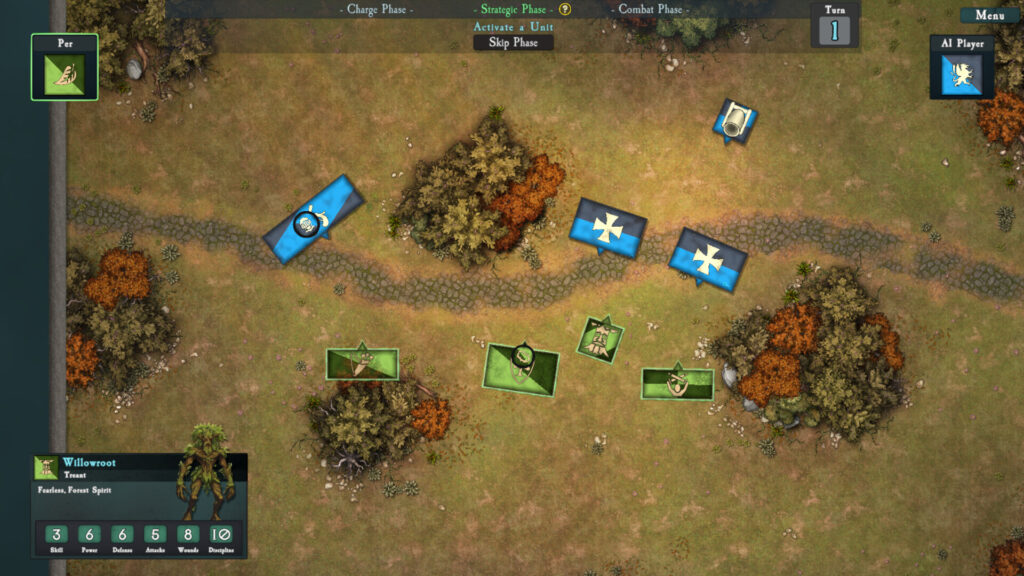What’s that? You have no idea what I’m talking about? Well let me tell you all about it!
Let me take you back to a time long past. A time when phones had cords, computer games had discs and resin miniatures were just a glint in a madman’s eye. In this ancient past time White Dwarf magazine was more valuable and had more content than the mailer of advertisements and coupons that I am forced to recycle every Wednesday. White Dwarf was a hobby magazine, and a big part of that hobby content was battle reports. These bat reps would feature stunning photos of GW’s studio armies being commanded by titans of the industry, but they would also feature colorful illustrations that were much more useful for following the action turn by turn.
Now imagine that this illustration became a playable game and you have SOVL, a 2D, turn based, wargame that uses a dice-based system. The game documentation makes it clear that SOVL is meant to be played on the tabletop as well as the computer, containing all the necessary rules to do so. While many of the mechanics are recognizable, SOVL is not a direct transcription of any of the editions of Warhammer. In fact, it may be closer to Kings of War in some respects, but KoW itself is so close to Warhammer that it is hard to say for sure. Either way, it should feel very familiar to any fan of classic rank & flank games.
That said, there are some significant differences, the biggest of which is alternating activations. Players roll off to see who activates first, and then take turns acting with a single unit, performing whatever actions are available in that phase. Which brings us to the next big difference: Phases. SOVL condenses that action of each turn (or “loop” as they call it) down to three phases: Charge, Strategic and Combat Phases. In the Charge Phase units declare charges, then move into contact once all charges are declared. Regular moves AND shooting are resolved in the Strategic phase, with melee combat and its results being resolved in the Combat phase.
There are a score of other differences, many of which are perhaps on the development roadmap, but feel glaring only when typing them out. Generals do not have leadership auras, they only buff the unit they are in. Shooting does not cause Panic (“Discipline”) Checks, but your AI opponents will automatically concede once they take enough casualties. There are no special rules for skirmishers, they just act like small, formed units. There are also no hills, so ranged units can’t be placed above and behind otherwise intervening terrain and units. These look like big problems on paper, but I promise you I didn’t even notice them on my first couple games, and I play Dwarfs!
One could be forgiven for looking at that list of omissions and wondering how this could possibly compare favorably to any of the tabletop games it emulates, but the thing is, it actually compares very favorably. Alternating activations is a literal game changer and really highlights what a missed opportunity this was by GW. Taking turns declaring charges, moving and shooting, and resolving combats makes players think tactically about their order of operations in a way that The Old World does not. The same goes for the stripped down mechanics and economy of special rules and items. The Old World is, let’s say “cluttered” when it comes to special rules and circumstances, where SOVL gives you just a very few abilities you can fire just once, so you better make them count.
Even if it’s not for you, SOVL is a very interesting look at the road not taken by The Old World. It has its flaws and omissions, like any game, but for all that, I can’t stop playing it. Will you give it a try? Let me know what you think in the comments!
And remember, Frontline Gaming sells gaming products at a discount, every day in their webcart!



